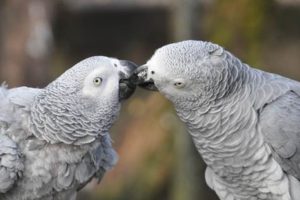Blue & Gold Macaw
(Ara ararauna)
Native: South America – Venezuela, Peru, Brazil, Bolivia and Paraguay.
Habitat: Tropical Forests and Swamps.
Status-
Captivity: Common
Wild: Common
Diet: Seeds, high-fat fruits from palm trees, nuts and berries.
Interesting Facts
Among the more common species of macaw, the blue and gold has become popular for its splendid visual appearance and the ability to mimic speech. They have huge attitude but a sensitive nature, and have become known as an excellent companion bird. Like most Parrots, Blue & Gold’s are monogamous, often bonding for life. In the wild, they flock to mountains of clay called “macaw licks”, which when digested help to neutralise toxins. They can reach speeds up to 35 mph and have strong beaks for opening all sorts of nuts and seeds.
Our Charlie: One thing you may notice when strolling through our parrot path is that it is littered with macaws. However, you will also notice that the most common macaw on display is the Blue and Gold. Among all of these bright personalities, one Blue and Gold stands out among them all. Her name is Charlie. Easily recognizable with her semi-plucked chest, Charlie is quite possibly the nicest macaw on the parrot path. Easy going and calm natured, she loves climbing up your arm and perching high on your shoulder where she would happily sit for hours on end. It’s no wonder most people feel like a pirate with Charlie around, as she makes no fuss whatsoever and you would almost forget she was there if not for her weight. Most children would usually be unable to handle a macaw, with the bird being as big, heavy and fidgety as they are, but not with Charlie! She’s not keen on being touched or stroked, but is more than happy to patiently perch on an outstretched arm while you add to the family photo album.












